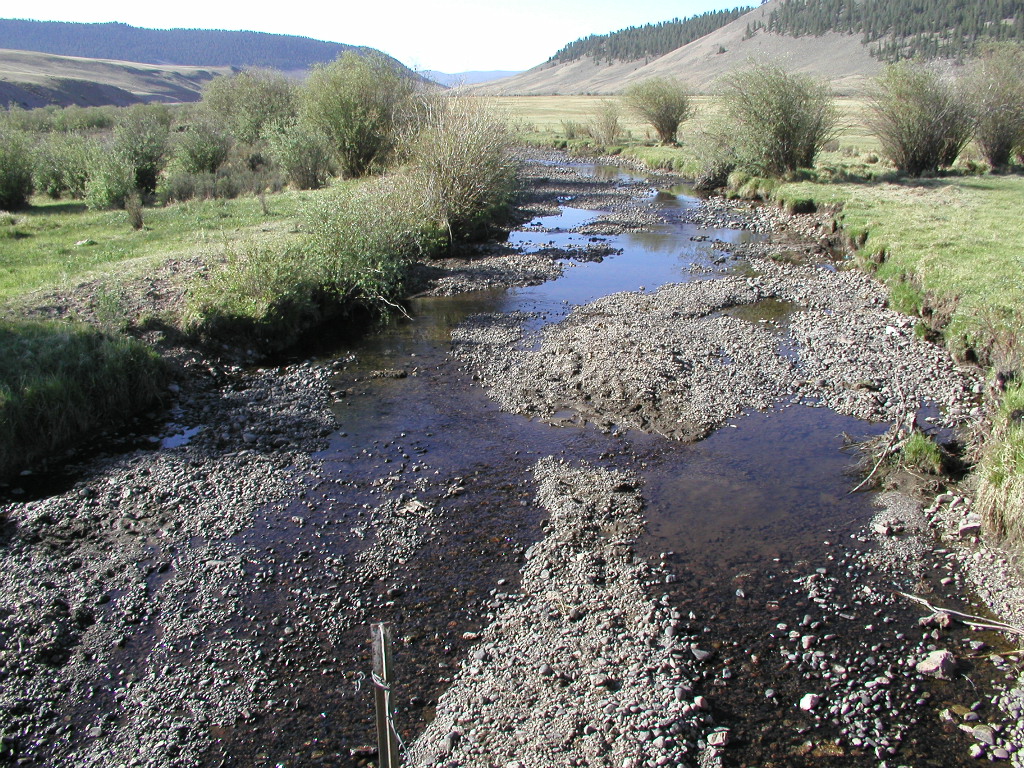Water in Colorado is owned by the people of Colorado. But the right to use that water is property, which can be bought and sold on the market by all sorts of people for all sorts of reasons. So why aren’t we – the people of Colorado – buying those rights when they are on the market?
Nineteenth century miners, farmers and ranchers built our initial ditch and reservoir systems. Since then, cities and suburbs on the Front Range have claimed much of the water leftover, and over time the water in our streams and rivers has, for the most part, been fully claimed. So whereas homesteaders were able to claim water rights by constructing diversions to their fields and homes more than a century ago, these days if you are part of a growing municipality or a new business without water service, you need go out and buy existing water rights—if you can afford them.
But where does that leave rivers and streams?
There were few people interested in using water to directly sustain wildlife and aquatic ecosystems prior to the environmental movement in the 1970s. There was also little focus on the longevity of rural communities, just the beginnings of widespread agricultural dry-up, and minimal fear that our state might be cut short of water for purposes of compliance with the Colorado River Compact. In order for reliable, significant volume water rights to be put to use for these purposes, those of us who care about the issues described above will have to buy them.
The state does have a small coffer for water right purchases, housed in the Colorado Water Conservation Board’s Instream Flow section. But that amount taps out at $1 million annually, which has to be stretched not only for permanent water right acquisitions, but also temporary leases and programmatic support. A million dollars does not go far towards the purchase of water rights placed on the market in the range of $5 to $10 million, of which there have been several lately.
How would we find the money to acquire strategic, senior water rights on rivers like the Colorado, the Yampa, the Gunnison, and their tributaries?
One solution might be a special district—let’s call this one the Colorado Water Security Partnership for now, because its purpose would be to provide water security for rural communities and Front Range municipal water users and aquatic ecosystems.
A special district is voter-approved governmental unit that performs a specific function— in this instance, collecting a modest property tax to buy water rights, and relying on a board of representatives from each region in the district to decide what water to buy and allocate that water where it is needed most. The mill levy would truly be modest. Back of crumpled-envelope math tells me that if property owners from the Colorado River Basin (west slope) and those portions of the state served by Denver Water, Colorado Springs and Northern Colorado Water Conservancy District and the other utilities that use water diverted from the Colorado River Basin were to join together, households could contribute a few dollars per year to afford those water rights in the $5 or $10 million range.
If the Colorado Water Security Partnership could buy water rights to support the environment and rural communities, and offset Colorado River Compact delivery requirements, east and west slope would gain a host of side benefits.
Colorado has seen an influx of outside investment in water rights that leaves us feeling uncertain at best—why not beat the outside competition and buy water ourselves, give selling water right owners opportunity to direct water rights they want to sell towards a good end, and know that this water won’t be a tool of financial speculation? West slope agricultural producers are being asked to conserve and even fallow—why not take some pressure off and operate water rights on behalf of all Colorado River basin water users? And finally, why not support the environment and recreational opportunities on the West Slope that our entire state is so fortunate to enjoy?
Rural communities are struggling as agriculture dries up and coal moves out; rivers flow so low that we can’t fish in them without killing the sport; and junior diversions to urban and suburban Colorado, which have grown to rely on the supply, are threatened by increased pressures and decreasing flows on the Colorado River. Front Range Colorado may not fully realize how closely its fate is tied to the success of Western Colorado. But not only do those of us on the east side of the Continental Divide love the mountain playgrounds and incredible produce of the west slope, our economies and environments are literally intertwined.
The beauty of a special district is that we are all in this together – we pay together, and we prosper together.
We’re going to get what we pay for when it comes to Colorado water, and if we pool our resources together to be managed collaboratively, we can help to secure a future that we all want.
What do you think about the idea of a Special District for Colorado Water Security? Continue the conversation in the comments below!
